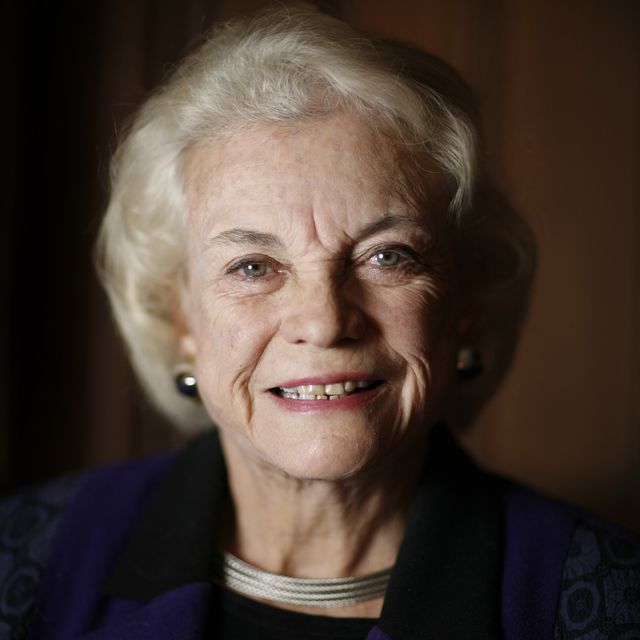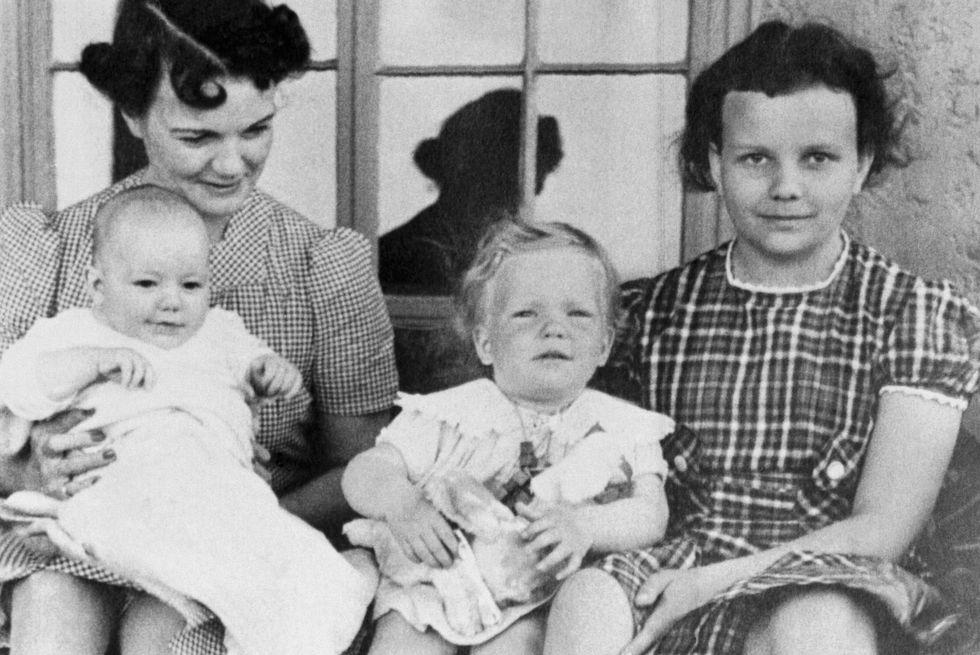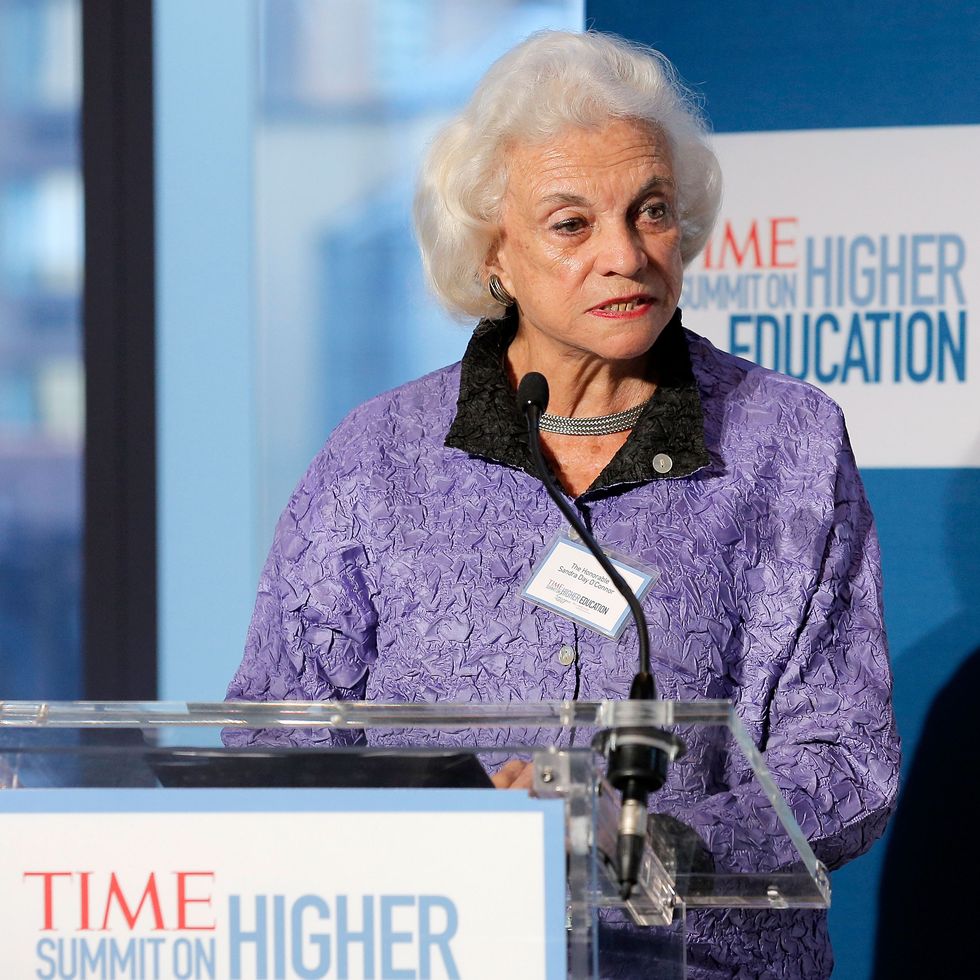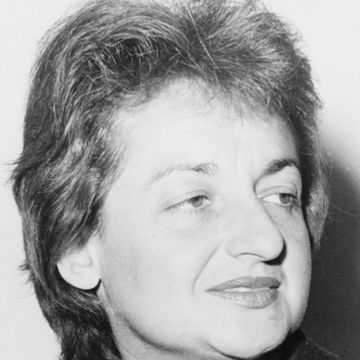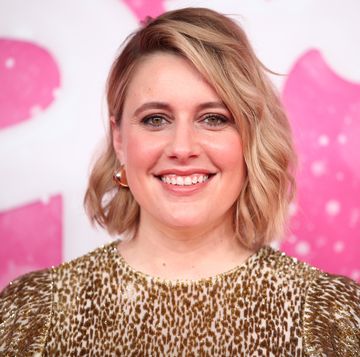1930-2023
Latest News: Sandra Day O’Connor Dies at Age 93
Groundbreaking former Supreme Court Justice Sandra Day O’Connor died December 1, 2023, at age 93 in Phoenix. Her cause of death was “complications related to advanced dementia, probably Alzheimer’s, and a respiratory illness,” according to a Supreme Court statement. O’Connor was the first woman to serve on the nation’s highest court and held the position for 24 years before retiring in early 2006.
Who Was Sandra Day O’Connor?
Sandra Day O’Connor made history as the first female justice to serve on the U.S. Supreme Court, from 1981 to 2006. After working as a lawyer for several years, O’Connor served in the Arizona state senate before winning a judicial position on Maricopa County Superior Court in 1974. Less than a decade later, President Ronald Reagan nominated her to the U.S. Supreme Court, and she received unanimous Senate approval. O’Connor was a key swing vote in many important cases, including the upholding of Roe v. Wade in a 1992 decision. After her retirement, she remained active in legal and civic discourse until 2018 when she announced she had dementia. O’Connor died in December 2023 at age 93.
Quick Facts
FULL NAME: Sandra Day O’Connor
BORN: March 26, 1930
DIED: December 1, 2023
BIRTHPLACE: El Paso, Texas
SPOUSE: John Jay O’Connor III (1952-2009)
CHILDREN: Scott, Brian, and Jay
ASTROLOGICAL SIGN: Aries
Early Life and Education
Born on March 26, 1930, in El Paso, Texas, Sandra Day spent part of her youth on her family’s Arizona ranch. O’Connor was adept at riding and assisted with ranch duties. She later wrote about her rough and tumble childhood in her memoir, Lazy B: Growing Up on a Cattle Ranch in the American Southwest, published in 2002.
After graduating from Stanford University in 1950 with a bachelor’s degree in economics, Sandra attended the university’s law school and received her degree in 1952. She was third in her class. That same year, she married John Jay O’Connor III and assumed the name that would eventually make history books.
Early Legal and Political Career
With opportunities for female lawyers very limited in the 1950s, O’Connor struggled to find a job after her graduation. She worked without pay for the county attorney of California’s San Mateo region just to get her foot in the door. O’Connor soon became deputy county attorney.
From 1954 to 1957, O’Connor moved overseas and served as a civilian lawyer for the Quartermaster Masker Center in Frankfurt, Germany. She returned to the United States in 1957 and settled in Phoenix. There she worked at a private practice before returning to public service, acting as the state’s assistant attorney general from 1965 to 1969.
In 1969, O’Connor received a state senate appointment by Governor Jack Williams to fill a vacancy. A conservative Republican, O’Connor won reelection twice then set her sights on another elected position.
In 1974, O’Connor took on a different challenge and ran for judge in the Maricopa County Superior Court, winning the race. O’Connor developed a solid reputation for being firm but just. Outside of the courtroom, she remained involved in Republican politics. In 1979, O’Connor was selected to serve on the state’s court of appeals.
First Female Supreme Court Justice
Only two years later, in 1981, President Ronald Reagan nominated her for associate justice of the U.S. Supreme Court. O’Connor received unanimous approval from the U.S. Senate and broke new ground for women when she was sworn in as the first female justice on the Supreme Court on September 25, 1981. She was 51.
As a member of the country’s highest court, O’Connor was considered to be a moderate conservative, who tended to vote in line with the Republican platform, though at times broke from its ideology. O’Connor often focused on the letter of law and voted for what she believed best fit the intentions of the U.S. Constitution.
In 1982, she wrote the majority opinion in Mississippi University for Women v. Hogan, in which the court ruled 5-4 that a state nursing school had to admit men after traditionally having been a women’s-only institution.
In opposition to the Republican call to reverse the 1973 Roe v. Wade decision on abortion rights, O’Connor provided the vote needed in Planned Parenthood v. Casey (1992) to uphold the court’s earlier decision. In a majority opinion coauthored with Anthony Kennedy and David Souter, O’Connor broke away from the dissents penned by William Rehnquist and Antonin Scalia.
In 1999, O’Connor sided with the majority opinion in the sexual harassment case Davis v. Monroe County Board of Education that ruled the school board in question was indeed responsible for protecting a fifth-grade student from unwanted advances from another student.
O’Connor was also the deciding vote on the controversial Bush v. Gore case in 2000. The ruling effectively ended the recount of votes for the contested 2000 presidential race between George W. Bush and Al Gore, thereby upholding the original certification of Florida’s electoral votes. Bush went on to serve his first term as president, with O’Connor later admitting that perhaps the highest court shouldn’t have weighed in based on the circumstances of the election.
The groundbreaking justice retired from the court on January 31, 2006, after 24 years of service. The 75-year-old moved back to Phoenix to spend more with her ailing husband. Her successor on the court was Justice Samuel Alito.
Life After the Supreme Court
O’Connor didn’t slow down in her retirement. In 2006, she launched iCivics, an online civics education venture aimed at middle school students. As she explained to Parade magazine, “We have a complex system of government. You have to teach it to every generation.” She has also served on the federal appeals court and authored several books: the judicial memoir The Majesty of the Law: Reflections of a Supreme Court Justice (2003), the children’s titles Chico (2005) and Finding Susie (2009), as well as Out of Order: Stories From the History of the Supreme Court (2013).
O’Connor was active on the lecture circuit as well, speaking to different groups around the country while continuing to weigh in on legal issues. In 2012, O’Connor defended current Supreme Court Chief Justice John Roberts for his vote to uphold then-President Barack Obama’s healthcare law. Roberts came under fire for not voting in line with conservative views. According to The Los Angeles Times, O’Connor said that the justices weren’t obligated to follow the politics of the president who appointed him or her. She also campaigned to end judicial appointments through elections, with the belief that having judges run campaigns compromises the judicial process.
After her retirement, O’Connor received numerous accolades. Arizona State University named its law school after the distinguished justice in 2006 and President Obama honored her with the Presidential Medal of Freedom in 2009.
Husband and Children
Sandra married John Jay O’Connor III in 1952. Together, they had three sons: Scott, Brian, and Jay. Her children were born between 1957 and 1963.
Eventually, John was diagnosed with Alzheimer’s disease, and part of Sandra’s decision to retire from the court was to spend more time with him. John died in 2009.
Health Challenges
During her time as a Supreme Court justice, O’Connor faced some personal challenges. She discovered that she had breast cancer in 1988 and subsequently underwent a mastectomy. In 1994, O’Connor publicly revealed her battle with the disease in a speech delivered to the National Coalition for Cancer Survivorship.
Then in October 2018, O’Connor announced she had be diagnosed with early stages of dementia that might be Alzheimer’s disease. “As this condition has progressed, I am no longer able to participate in public life,” she said in a statement. “Since many people have asked about my current status and activities, I want to be open about these changes, and while I am still able, share some personal thoughts.”
Quotes
- The power I exert on the court depends on the power of my arguments, not on my gender.
- We have a complex system of government. You have to teach it to every generation.
- Apparently, a great many people have forgotten that the framers of our Constitution went to such great effort to create an independent judicial branch that would not be subject to retaliation by either the executive branch or the legislative branch because of some decision made by those judges.
- Judges are not only not authorized to engage in executive or legislative functions, they are also ill-equipped to do so.
Fact Check: We strive for accuracy and fairness. If you see something that doesn’t look right, contact us!
The Biography.com staff is a team of people-obsessed and news-hungry editors with decades of collective experience. We have worked as daily newspaper reporters, major national magazine editors, and as editors-in-chief of regional media publications. Among our ranks are book authors and award-winning journalists. Our staff also works with freelance writers, researchers, and other contributors to produce the smart, compelling profiles and articles you see on our site. To meet the team, visit our About Us page: https://www.biography.com/about/a43602329/about-us
